Table of contents
Raw lovage ( Levisticum officinale ) is also known as Maggi herb . This is due to its celery-like taste, which is reminiscent of vegetable broth or Maggi seasoning. Other alternative names are nut stock or nut herb.
Use in the kitchen
Used as an organic spice, Maggi herb or lovage increases the digestibility and taste of food. The spicy-aromatic to bitter-sweet aroma is reminiscent of celery and yeast extract . Too much should be avoided, as the plant acts as a natural flavor enhancer.
Can you eat lovage raw? All parts of the plant can be eaten fresh. You can use the leaves, roots, seeds and oil as well as the lovage stems. Leaf stalks and young shoots can be blanched and enjoyed as a vegetable.
From April to July, finely chopped raw leaves and shoots can be used as a fresh seasoning for salads, raw vegetables, vegetable dishes, vegan patties, sauces, soups, stews, etc. To add flavor to stews, soups, etc., larger leaves can be cooked on the stem and then removed whole before serving.
Dried, the leaves taste great as vegetable chips. Thanks to their intense aroma, they are ideal as a dry spice and taste great added to herb oil, herb vinegar, wild plant salt, pesto or seasoning paste. Vegan spice paste based on Maggi herb (or Luststock, Nusskraut or Nussstock) is unusual but delicious.
Is the lovage flower edible? From July to August, the raw flowers shine as an edible decoration on dishes and as a flavoring agent; like the leaves, they are suitable for making wild plant lemonade. Whole flower heads can be prepared in batter.
The ripe fruits (August-September) can be used to flavor oil, vinegar or spirits, as well as for use as a dry spice or for sprouting seeds. The seeds of the Maggi herb are used in recipes for bread, biscuits and soups.
The roots (September-March), sometimes called rennet root or liver root, are finely chopped and used as a spice or pickled vegetable. Fine slices can be dried to make healthy raw food chips.
Is Maggi seasoning lovage? The taste of lovage is reminiscent of the soup seasoning created by Julius Maggi, although it does not contain any components of this plant. Nevertheless, the tasty spice plant has retained the popular name 'Maggi herb' (Maggi herb) to this day.
Vegan recipe for soup seasoning with Maggi herb
Ingredients (for several small jars): 30 g lovage leaves (organic quality), 30 g lovage stalks (organic), ¼ celeriac, 1 carrot, 1 parsley root, 1 garlic clove (peeled), 1 onion (peeled), 2 tbsp salt, 7 tbsp cold-pressed rapeseed oil (shorter shelf life due to the omega-3 fatty acids ) or cold-pressed olive oil (for a longer shelf life).
Preparation: Roughly chop the diced raw vegetables (without leaves) with 3 tablespoons of oil using a hand blender or another food processor. Mix the remaining oil well with the salt and stir into the vegetables together with the lovage leaves. Blend again until the desired consistency is reached and pour into small jars. Store the vegan soup seasoning in the fridge.
Recipe for fresh lovage tea
To make the tea, pour 150 ml of boiling water over 1.5-3 g of finely chopped root of the medicinal plant and let it brew in a closed pan. After 10-20 minutes, strain the tea. Some authors even recommend boiling the root pieces for 15-20 minutes. 6 Drink a cup of this tea three times a day between meals. 1,2,3,4
Vegan recipes with lovage (or Maggi herb) can be found under the note: " Recipes that have the most of this ingredient ".
| Not only vegans or vegetarians should read this: Vegans often eat unhealthily. Avoidable nutritional mistakes . |
Purchasing - Storage
Lovage or Maggi herb is only occasionally available in fresh bunches, most likely at the local weekly market, directly from the farmer or via a green box (subscription box, seasonal box). In Switzerland, the herb is in season from May to August, according to the BauernZeitung .
It is rare to find lovage as a dried spice in supermarkets such as Coop, Migros, Denner, Volg, Spar, Aldi, Lidl, Rewe, Edeka, Hofer or Billa . Organic shops and organic supermarkets such as Denn's Biomarkt or Alnatura sell the herb in organic quality. You can also find dried, freeze-dried or powdered Maggi herb in pharmacies, health food stores, spice shops or online, some of which are raw or gently dried.
The availability of lovage varies depending on the size of the store, catchment area, etc. If you are interested, click on our recorded food prices for the DA-CH countries (above under the ingredient image). There you will find current prices from various supermarkets and their price development.
Found in the wild
The perennial with hollow stems 5, which grows up to 2 m high, can be found on nutrient-rich, deep and moist soils 3 - but rarely in the wild. 6 The leaves further down are longer, the ones further up have shorter stalks and at the top of the plant they sit directly on the sheaths. While the lower leaves are trifoliate and the middle ones are less divided, the upper ones are single. 7 The yellow-green flowers are tiny and appear in double umbels about 8 cm wide, from which egg-shaped green fruits form. 5
Careful identification is necessary to avoid confusion with poisonous umbelliferous plants. 7 The scent of the plant is helpful in this regard. Rubbing the leaves or roots releases the essential oil with its characteristic smell reminiscent of celery. 3,8
The main flowering period is from July to August. 6,7 Maggi herb can be harvested throughout the entire growth period, although the ideal time is before flowering.
Storage tips
How should you preserve Maggi herb? Fresh Maggi herb can be cut and frozen raw. You can make practical herb cubes by putting the raw herb in ice cube trays with a little water.
Dried herbs should be stored in tightly sealed containers made of metal or glass, protected from light. Plastic containers should be avoided as they have a negative effect on the essential oil. The stock should be checked regularly for insect infestation. 4
Ingredients - Nutritional values - Calories
Here we realistically show you the ingredients of spices and herbs per 1 g (instead of per 100 g as usual).
1 g of lovage has a calorie content of 0.48 kcal. The main nutrients consist of around 0.01 g of fat, 0.04 g of protein and 0.08 g of carbohydrates. 10
The vitamin A content (6.67 µg/1g) is particularly noteworthy. However, significantly more vitamin A can be found in raw fenugreek leaves (21 µg/1g), fresh sorrel (12.5 µg/1g) or in cow parsley (9 µg/1g). Comparable amounts can be found in curry leaves (6.3 µg/1g) and significantly lower amounts in fresh parsley (4.21 µg/1g) or in raw narrow-leaved willowherb (2.86 µg/1g). 10
The complete ingredients of raw lovage, the coverage of the daily requirement and comparison values with other ingredients can be found in our nutrient tables. In the article Nutrients explained you will get a detailed insight into the topic.
Effects on health
Is lovage healthy? There are numerous in vitro and in vivo studies on this, the varied results of which have so far only been verified in a few clinical studies. A small study on 18 patients with cystinuria shows that lovage has a kidney-protective effect and reduces the formation of kidney stones. 8 Placebo-controlled human studies on a herbal combination preparation made from lovage, centaury and rosemary have repeatedly shown a soothing effect on urinary tract infections. One of the placebo-controlled studies (on 659 patients) demonstrated a significant benefit of the drug, as antibiotics could be avoided. 8 Along with goldenrod ( Solidago spp.), birch ( Betula spp.), parsley ( Petroselinum crispum ) and celery ( Apium graveolens ), lovage is a strong diuretic medicinal plant (scale: weak, medium, strong). 2
Secondary plant substances
Many of the health effects of lovage can be attributed to the secondary plant substances it contains. Our article on secondary plant substances provides an overview of the classification of substance groups, their occurrence in foods and possible effects on humans.
Lovage contains the following secondary plant substances:
- Isoprenoids: Essential oils; Terpenes: triterpenes (saponins, steroids: phytosterols), monoterpenes (alpha-thujene, alpha-pinene, beta-pinene, camphene, sabinene, myrcene, alpha-phellandrene, beta-phellandrene, 3-carene, alpha-terpinene, gamma-terpinene, p-cymene, beta-ocimene, terpinolene, linalool, ocimene, 4-ol, alpha-terpineol, carvone, geraniol, geranyl acetate), sesquiterpenes (beta-elemene, gamma-elemene, beta-farnesene, beta-selenene, elemol, germacren B, spathulenol), aldehydes (nonanal) 19,26,27
- Alkaloids 26
- Polyphenols: Phenolic acids: hydroxybenzoic acids (gallic acid, vanillic acid, syringic acid, salicylic acid, ellagic acid), hydroxycinnamic acids (cinnamic acid, chlorogenic acid, caffeic acid, p-coumaric acid, ferulic acid, sinapic acid, rosmarinic acid); flavonoids: flavones (luteolin), flavanols (epicatechin, catechin), flavonols (rutin, myricetin, quercetin, hyperoside, astragalin); coumarins: umbelliferone, furanocoumarins (bergapten and psoralen), pyranocoumarins; tannins 19,24,25,26
- Other organic compounds: Phthalides: Alkylphthalides (cis- and trans-ligustilide, 3-butylphthalide, cis- and trans-butylidenephthalide, sedanenolide); Alcohols: Polyacetylenes (falcarinol and falcarindiol); Sotolon 8
However, it should be noted that the composition of the secondary plant substances in lovage can vary depending on the variety, time of harvest and growing conditions. Therefore, quantities are only of limited use and should only be understood roughly.
The fresh fruits contain 0.9% essential oil and the roots 0.4-1.7% - with up to 70% alkylphthalides. 12 The composition of the oil varies depending on the ripeness and age of the plant. The characteristic smell is caused by the alkylphthalides, including ligustilide. They determine the effectiveness of the medicinal plant. 1 In addition to the essential oil, the ingredient sotolon is crucial for the aroma. 8,13 This is responsible for the typical maggi note. 8 Sotolon is a strong aromatic substance that smells of maple syrup, caramel or burnt sugar in low concentrations, and of curry powder, lovage or fenugreek in high concentrations.
Several in vitro studies have shown that lovage essential oil has a pronounced antibacterial effect against numerous bacterial strains. 6 In vitro, synergistic effects of the extract with antibiotics against Salmonella Typhimurium ( Salmonella enterica serotype Typhimurium) have been demonstrated. 14 Another study has shown effects against mycobacteria and various fungal strains. 8 The essential oil of L. officinale is relatively active against the tuberculosis bacterium Mycobacterium tuberculosis . 18
In vitro, the phthalide ligustilide contained in lovage has been shown to have an antispasmodic effect. 2,11 Ligustilide may also be responsible for anti-inflammatory and analgesic effects. In two mouse models, 10 mg ligustilide per kg showed the same analgesic results as 200 mg acetylsalicylic acid per kg. 8
In 1937, an increase in the amount of urine in rabbits and mice was observed after infusion of lovage. 8 Some authors explain the diuretic effect by the terpene derivatives in the essential oil. 4,7,8
Several in vivo studies on rats showed learning-enhancing and neuroprotective effects 15 of lovage extract. The explanation lies in the increase in a neuronal growth factor and neurogenesis in the hippocampus. 8 Scientists found growth-inhibiting effects of an ingredient (butylphthalide) in vitro and in vivo on tumor cells in rats. 8
The liver-protective (hepatoprotective) effect of lovage was tested on animal models with the herbicide paraquat. Water extracts of Levisticum officinale have a high antioxidant effect that can protect against possible damage caused by the herbicide. 17
An animal study investigated the antidiabetic aspects of lovage. By administering hydroalcoholic stem and leaf extract before a glucose load, blood glucose levels were significantly reduced for 14 days. This improved other critical levels, such as the lipid profile and "insulin hormone", in rats with diabetes. The results show that lovage has significant antidyslipidemic and antioxidant properties. In addition, studies indicate that eleven of the secondary plant substances it contains, in particular the flavonoids, can inhibit the digestive enzyme α-amylase, which may explain its blood sugar-lowering effect. 19
Dangers - Intolerances - Side effects
Furanocoumarins can promote a skin disease (photodermatosis) under the influence of long-term or strong UV radiation. Phototoxic, photocarcinogenic or mutagenic effects are not to be expected when lovage is used therapeutically. This is particularly the case when the medicinal plant is prepared as a tea, as furanocoumarins have a low water solubility. 2,4,8,12 To be on the safe side, intensive sunbathing and UV radiation should be avoided when using the product for a longer period of time. 11
The falcarindiol contained in it has a fungicidal, antibacterial and toxic effect, but is present in such small doses that it is not a cause for concern. It does not cause contact allergies - unlike the falcarinol contained in ivy. 4
Preparations made from lovage root should be avoided in cases of acute inflammatory diseases of the renal parenchyma 4,8 (main renal tissue), as well as in cases of impaired renal function. 4 Flushing therapy is contraindicated in cases of edema due to impaired cardiac and renal function. 8
There are currently no studies on the safety of the product for use in children and adolescents or during pregnancy and breastfeeding, which is why the HMPC ( Herbal Medicinal Product Committee ) does not recommend its use in these groups of people. 3,8
Risk of confusion and possibilities of confusion
Information on confusion with other non-toxic and poisonous umbelliferous plants can be found in our text on the edible wild plant ground elder under the subtitle of the same name.
Use as a recognized medicinal plant
The HMPC has classified lovage root as a traditional herbal medicinal product ( § 39a AMG ). The root is used to increase the amount of urine as a flushing therapy: It has a supportive effect on mild urinary tract complaints. 3,4,8 It is important to drink at least two liters of water per day during therapy. 11
According to the European Pharmacopoeia, the term lovage root (Levistici radix) includes root parts and whole or cut, dried rhizome parts of Levisticum officinale WDJ Koch. 3,8 Whole plant parts must contain at least 0.4% essential oil and cut parts must contain at least 0.3% essential oil. 8
Cut roots are used to make tea. The daily dosage is 4-6 g, divided into two cups daily. 3,8 Powdered roots are taken in dragees, and aqueous extracts in drops. 3 The usual dose of a tincture is 0.5-2 ml three times a day. 2
The duration of use should be limited to two to four weeks. If symptoms such as urinary retention, cramps, blood in the urine or fever worsen, or if the symptoms do not improve despite use, you must consult a doctor. 8
Folk medicine - naturopathy
The BGA ( Federal Health Office in Germany ) lists digestive complaints such as bloating, belching and heartburn as indications on the package inserts of preparations and medicines containing Maggi herb. 7 Detailed confirmatory studies are lacking, but the slightly bitter taste justifies its use. 1,8
Some authors cite supportive effects externally for wounds that are slow to heal and internally for relaxing the gastrointestinal tract, for flatulence, for inflammatory urinary tract diseases, 1,6 indigestion, stomach complaints, 6 rheumatic complaints, menstrual disorders, migraines and gout 7 (popular names: gout root, gout stick). The use of Maggi herb as an expectorant for catarrh 8,12 is not scientifically substantiated. 8 In Iranian folk medicine, lovage is said to have positive properties with regard to fat metabolism, which is not scientifically documented. 19
Ecological footprint - animal welfare
In contrast to industrial flavor enhancers, organic Maggi herb scores as a natural and healthy flavoring agent. Regionally sourced lovage leaves or homemade soup seasoning are a sustainable Maggi substitute (see our short recipe above). They help to reduce the ecological footprint to keep costs low. Small businesses that switch to photovoltaic systems and in-house water treatment are becoming more and more common. In addition, local organic herbs guarantee short supply chains and careful use of resources. 21 When shopping, you should ideally look for herbs that have been organically grown, as these do not contain synthetic fertilizers or pesticides. Such insecticides or weed killers are often used in conventional agriculture and have been proven to have a negative effect on important pollinators, but also on other living creatures and human health. 22,23
We have not found any precise figures for the CO 2 footprint of Maggi cabbage, but it can probably be compared with that of parsley, which has 0.4 kg CO 2 eq/kg. 9 The same applies to the water footprint : we could not find any figures for lovage. However, Mekonnen and Hoekstra show values for peppermint, which at 288 l/kg requires a similar amount of water as vegetables on average. 16
Lovage offers bees and other insects medium nectar values and no to low pollen contents 20 (nectar value and pollen value scale: none, low, medium, high, very high).
For detailed explanations of various sustainability indicators (such as ecological footprint, CO2 footprint, water footprint), see our article: What does the ecological footprint mean?
Worldwide occurrence - cultivation
The original home is West Asia. In Europe, cultivation can be traced back to a period of more than a thousand years and in North America lovage has been known since modern times. 3,4,7 In these countries, some wild populations of the cultivated plant can be found. 3
Cultivation - Harvest
How should you plant walnut trees? Propagation takes place in the autumn by sowing or dividing the rhizomes and roots. Possible pests that can attack the leaves are leaf miners. 5
When can you harvest lovage? The leaves and the tender, juicy stems are cut off in early spring - before many other herbs. From the third year onwards, the roots and rhizomes can be dug up for decoctions, tinctures or extracts. The ripe seeds of the lovage plants are harvested in autumn and used dried for decoctions. 5
The medicinal plant is obtained exclusively through cultivation of different varieties. The main cultivation areas include the Netherlands, Germany, Hungary, the Czech Republic, Romania and some Balkan states. 4.8
For commercial processing, the three-year-old rootstock with finger-width roots is harvested in autumn. The roots are dried whole at 35-45 °C so that they lose as little of the essential oil that determines their effectiveness as possible. 8
Further information
Levisticum officinale is commonly classified as belonging to the genus Levisticum within the carrot family (Apiaceae).
Alternative names
The following names are known in common parlance for lovage (Liebstoeckel) or Maggi herb (Maggi herb): real lovage, mountain lovage (mountain lovage), love tube, love stem, lust stock (Lusstock, stem), lust corners, lavas, nut stock, nut herb, nerve herb, nerve herb, gout root, gout stick, liver stock root, uterus, uterine herb, bath herb, stock herb, labstock root, water herb, foliage stick, sauerkraut root, soup praise or Maggi pepper. Incorrect spellings are: Liebstöckl, Maggie Kraut.
The English name is lovage or 'Maggi herb'. 13
Latin alternative names are Angelica levisticum ALL., Ligusticum l. L., Hipposelinum l. (L.) BRITTON & ROSE, Levisticum l. KARSTEN, Levisticum paludapifolium (LAM.) ASCH., L. officinale var. vel subsp. cultum THELLUNG, L. vulgare HILL/REICHB., Angelica paludapifolia LAM., Selinum levisticum (L.) EHLKRAUSE.
Bibliography - 27 Sources
| 1. | Niederegger O, Mayr C. Heilpflanzen der Alpen. Gesundheit aus der Natur von A bis Z. Innsbruck: Tyrolia-Verlag; 2006. |
| 2. | Yarnell E. Botanical medicines for the urinary tract. World J Urol. 2002;20(5):285-293. |
| 3. | Arzneipflanzenlexikon: Liebstöckel. |
| 4. | Blaschek W. (Herausgeber). Wichtl –Teedrogen und Phytopharmaka. Ein Handbuch für die Praxis. Stuttgart: Wissenschaftliche Verlagsgesellschaft mbH; 6. Auflage. 2016. |
| 5. | Bown D. Kräuter. Die grosse Enzyklopädie. Anbau und Verwendung. München: Dorling Kindersley; 2. Auflage. 2015. |
| 6. | Fleischhauer SG, Guthmann J, Spiegelberger R. Enzyklopädie. Essbare Wildpflanzen. 2000 Pflanzen Mitteleuropas. Aarau: AT Verlag; 1. Auflage. 2013. |
| 7. | Pahlow M. Das grosse Buch der Heilpflanzen. Gesund durch die Heilkräfte der Natur. Hamburg: Nikol Verlagsgesellschaft mbH & Co. KG; 8. Auflage. 2019. |
| 8. | Achmüller A. HMPPA-Monographien. Levisticum officinale. Liebstöckel. ÖAZ 19/20:38-40. |
| 9. | Concito. The big climate database. Version 1.1 Parsley. 2024. |
| 10. | USDA (United States Department of Agriculture). Nährstofftabellen. |
| 11. | Schilcher H, Kammerer S, Wegener T. Leitfaden Phytotherapie. München: Elsevier GmbH; 3. Auflage. 2007. |
| 12. | Spektrum. Lexikon der Arzneipflanzen und Drogen. Levisticum officinale. |
| 13. | Blank I, Schieberle P. Analysis of the seasoning-like flavour substances of a commercial lovage extract (Levisticum officinale Koch.). Flavour Fragr J. 1993;8(4):191-195. |
| 14. | Garvey MI, Rahman MM et al. Medicinal plant extracts with efflux inhibitory activity against Gram-negative bacteria. International Journal of Antimicrobial Agents. 2011;37(2):145-151. |
| 15. | León A, Del-Ángel M, Ávila JL, Delgado G. Phthalides: distribution in nature, chemical reactivity, synthesis, and biological activity. In: Kinghorn AD, Falk H, Gibbons S, Kobayashi J (eds). Progress in the Chemistry of Organic Natural Products 104. Vol 104. Springer International Publishing; 2017:127-246. |
| 16. | Mekonnen MM, Hoekstra AY. The green, blue and grey water footprint of crops and derived crop products. Hydrol. Earth Syst. Sci. 2011; 15: 1577-1600. |
| 17. | Afarnegan H, Shahraki A, Shahraki J. The hepatoprotective effects of aquatic extract of Levisticum officinale against paraquat hepatocyte toxicity. Pak J Pharm Sci. 2017;30(6(Supplementary)):2363-2368. |
| 18. | Miran M, Feizabadi MM et al. The activity of Levisticum officinale W.D.J. Koch essential oil against multidrug-resistant Mycobacterium tuberclosis. Iran J Microbiol. 2018;10(6):394-399. |
| 19. | Ghaedi N, Pouraboli I, Askari N. Antidiabetic properties of hydroalcoholic leaf and stem extract of Levisticum officinale: an implication for α-amylase inhibitory activity of extract ingredients through molecular docking. Iran J Pharm Res. 2020;19(1):231-250. |
| 20. | Ministerium für Ländlichen Raum und Verbraucherschutz Baden-Württemberg. Bienenweidekatalog. Verbesserung der Bienenweide und des Artenreichtums. 6. Aktualisierter Nachdruck. Stuttgart. Oktober 2019. |
| 21. | Heuschrecke com: BioBeitrag: Verantwortlicher Umgang mit CO2. 19. Juni 2022. |
| 22. | EFSA (European Food Safety Authority): Adriaanse P, Arce A, Focks A et al. Revised guidance on the risk assessment of plant protection products on bees (Apis mellifera, Bombus spp. and solitary bees). EFSA Journal. 2023;21(5):e07989. |
| 23. | Gill HK, Garg H. Pesticides: Environmental Impacts and Management Strategies. In: Pesticides - Toxic Aspects. InTech Open. 2014. |
| 24. | Nour V, Trandafir I, Cosmulescu S. Bioactive compounds, antioxidant activity and nutritional quality of different culinary aromatic herbs. Not Bot Horti Agrobo. 2017;45(1):179–184. |
| 25. | Kozłowska M, Ścibisz I, Przybył J, Ziarno M, Żbikowska A, Majewska E. Phenolic contents and antioxidant activity of extracts of selected fresh and dried herbal materials. Pol J Food Nutr Sci. 2021;269–278. |
| 26. | Ciocarlan A, Dragalin I, Aricu A, Lupascu L, Ciocarlan N, Popescu V. Chemical composition and antimicrobial activity of the Levisticum officinale w. D. J. Koch essential oil. ChemJMold. 2018;13(2):63–68. |
| 27. | Spréa RM, Fernandes Â, Calhelha RC, Pereira C, Pires TCSP, Alves MJ, et al. Chemical and bioactive characterization of the aromatic plant Levisticum officinale W.D.J. Koch: a comprehensive study. Food Funct. 2020;11(2):1292–1303. |

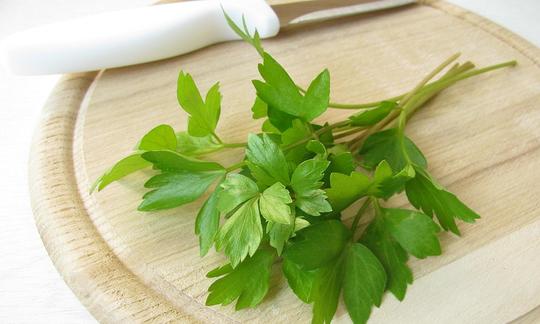

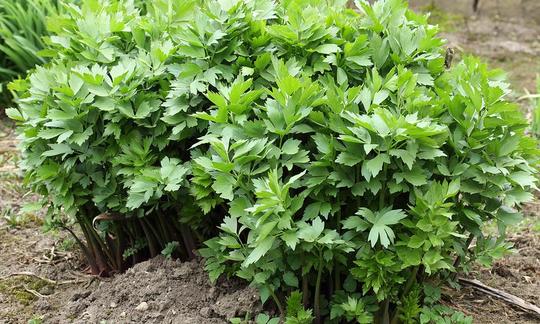

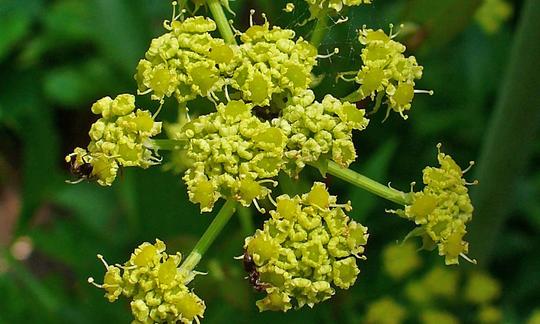

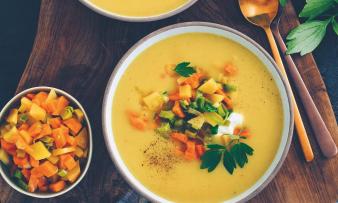
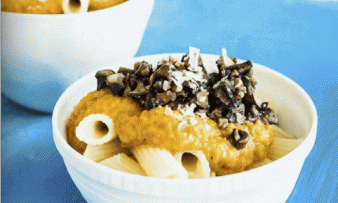
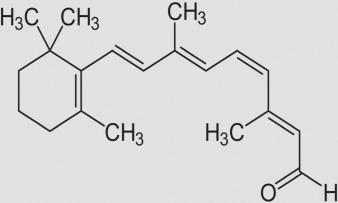




Comments